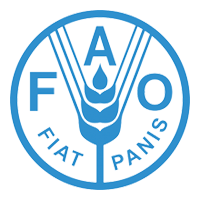Improving Index-Based Drought Insurance in Varying Topography: Evaluating Basis Risk Based on Perceptions of Nicaraguan Hillside Farmers
This paper discusses a methodology to model precipitation indices and premium prices for index-based drought insurance for smallholders. Spatial basis risk, which is borne by the insured, is a problem, especially in variable topography. Also, site-specific drought risk needs to be estimated accurately in order to offer effective insurance cover and ensure financial sustainability of the insurance scheme. We explore farmers' perceptions on drought and spatial climate variability and draw conclusions concerning basis risk with regards to the proposed methodology. There are technically many options to represent natural heterogeneity in index insurance contracts while serving the customer adequately and keeping transaction costs low.
Related Resources
Indicators of soil quality: A South-South development of a methodological guide for linking local and technical knowledge
This methodological guide was initially developed and used in Latin America and the Caribbean-LAC (Honduras, Nicaragua, Colombia, Peru, Venezuela, Dominican Republic), and was later improved during adaptation and use in eastern African (Uganda, Tanzania, Kenya, Ethiopia) through a South-South exchange...
Similarities Among FARA-Led IAR4D Innovation Platforms
Multi-stakeholder partnerships network which is typified by the FARA-led Integrated Agriculture Research for Development (IAR4D) of the SSA-Challenge Program is an innovation platform (IP) composed of stakeholders bound together by their individual interests in a shared commodity or outcome. The...
From measuring impact to learning institutional lessons: An innovation systems perspective on improving the management of international agricultural research
This paper argues that impact assessment research has not made more of a difference because the measurement of the economic impact has poor diagnostic power. In particular it fails to provide research managers with critical institutional lessons concerning ways of...

Analyzing the functional dynamics of technological innovation systems : A scheme of analysis
Various researchers and policy analysts have made empirical studies of innovation systems in order to understand their current structure and trace their dynamics. However, policy makers often experience difficulties in extracting practical guidelines from studies of this kind. In this...
Gathering of Wild Food Plants in Anthropogenic Environments across the Seasons: Implications for Poor and Vulnerable Farm Households.
This article presents the results of a study conducted in Northeast Thailand on wild food plant gathering in anthropogenic areas and the implications for vulnerable households. A sub-sample of 40 farming households was visited every month to conduct seven-day recalls...


